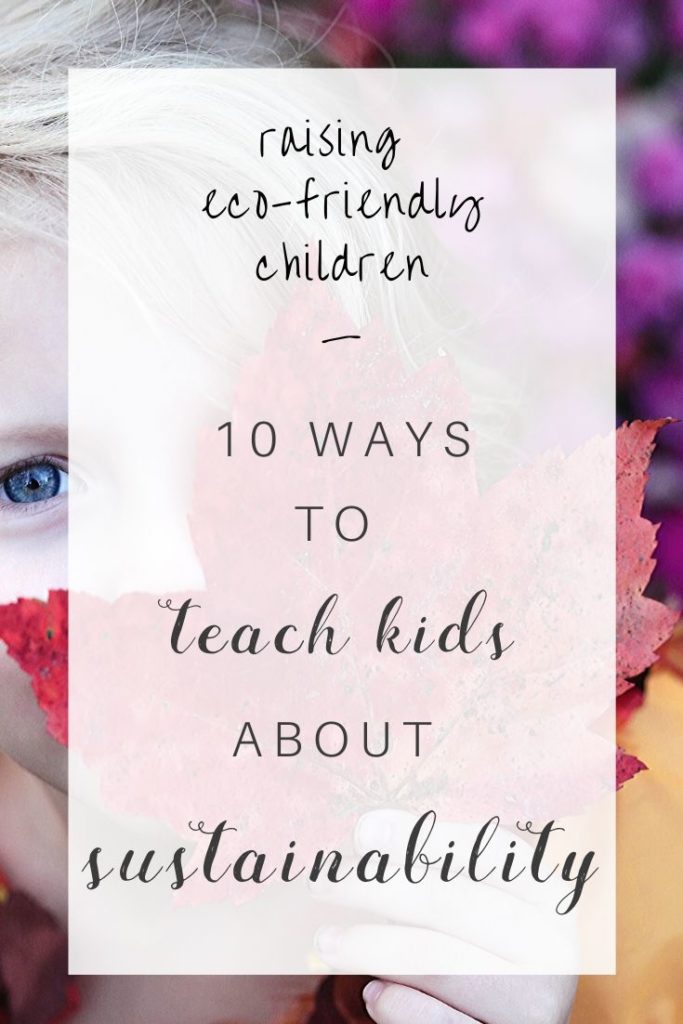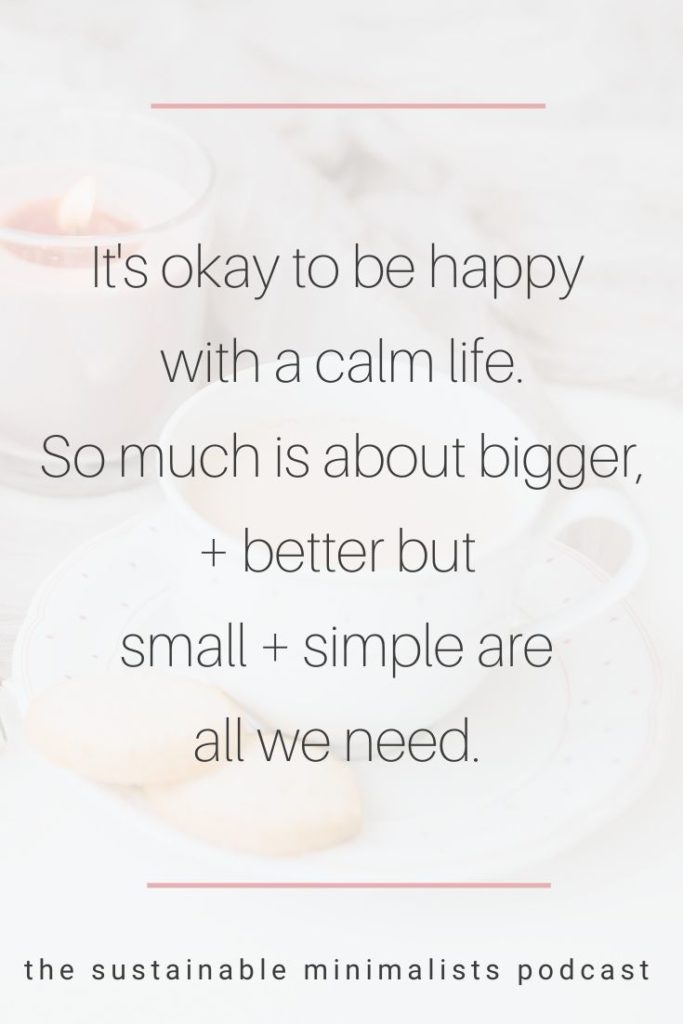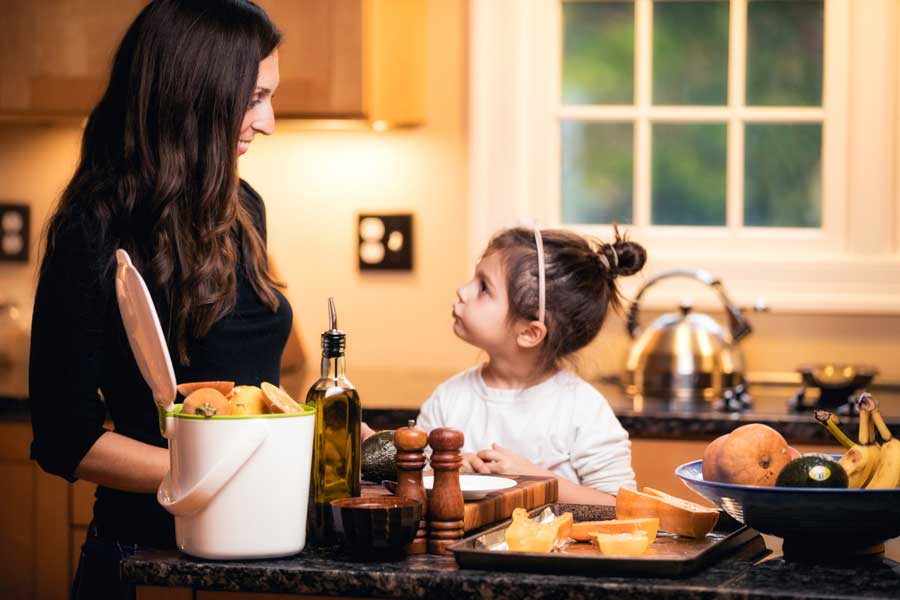10 Ways to Teach Kids About Sustainability
1o ways to teach kids about sustainability
___
It’s cliche but true: Our children are always watching.
As eco-conscious parents, we consistently lead by example on the ‘big’ actions (reducing air travel, cooking plant-based meals) as well as on the small stuff, too (repurposing water, line-drying clothes). We assume that – because our kids are always observing our behavior – they’ll naturally pick up on our low-waste, environmental ideals.
And while it’s certainly true that our children are watching us, it’s also true that they are learning from their peers, from advertisements and from society in general.
Not surprisingly, these varied sources of information send conflicting messages and confuse our children.
While it’s hard to explain sustainability to adults, it’s even harder to explain to children. But it’s absolutely possible to raise eco-friendly kids by using the following 10 ways to teach kids about sustainability.
How to teach sustainability to young children
1. Give them the ‘why’.
_____
When kids understand the ‘why’, they are much more likely to be enthusiastic about performing eco-friendly behaviors.
For example, my 5 year old knows how to recycle. She’s fairly good at sorting her recycling correctly, too, as she knows what’s recyclable and what isn’t.
What she doesn’t understand is the WHY.
When teaching her why, exactly, recycling is important, I keep it fun. I brought her to my town’s recycling center recently and I let her throw the glass bottles down the chute until they crashed below.
We waited on the curb until the garbage man came too, and we watched as he loaded all the non-recyclable trash into the truck. (Naturally, this led her to ask what happens to everything that’s not recycled.)
2. Make sustainability a game.
_____
Everyone loves a game, especially kids.
Make sustainability fun by adding games, challenges and special recognition into your existing efforts.
– Conserve water at bath time by creating a challenge.
The average family of 4 uses 400 gallons of water per day, so show your young child what a gallon of water looks like and tell him or her that a bath uses 70 gallons, on average.
Draw on the side of the tub with a washable crayon to visualize how much water was used then try and beat that amount by using less at the next bath.
– Give them a cup of water to brush their teeth instead of leaving the faucet on.
This is guaranteed to be a rip-roaring good time for young kids.
– Make eating an entire meal something to be celebrated.
Maybe there’s a nightly prize for induction into the Clean Plate Club, maybe there isn’t. The point is to show your child that you’re watching his or her eating habits; eating everything on the plate is important, too.
3. Show children where their food comes from.
_____
When kids understand where food comes from, they’re less likely to waste it.
A recent poll revealed that many children lack basic knowledge of food origins. The survey, which quizzed 1,000 children under the age of eight, found that 41% didn’t know eggs come from chickens.
Similar polls have found that many children are unaware that milk comes from cows.
Teach your children that not all food comes from a box by:
– Planting a garden.
Enlist your child’s help in every stage of the gardening process from planning to planting seeds to transferring seedlings outdoors to – finally! – harvesting.
Don’t expect young children to actually be helpful; instead, encourage them to take the lead on tasks they find enjoyable. (My daughters love using the hose during nightly watering.)
When starting a home garden, be sure to plant foods your kids love so that your children get excited not only about growing the foods but eating them, too.
– Making weekly trips to the farmer’s market.
Farmer’s markets are fun, especially for young kids. They support local farmers, too!
Enlist your child’s help in choosing fresh fruits and vegetables.
Talk to the farmers and get to know them by name.
– Joining a Community-Supported Agriculture (CSA) program.
Sign up for a local farm’s CSA program in which getting into the fields is part of the deal.
My local farm hosts two events every fall, both of which are the absolute highlights of the season for my kids.
The first is a farm tour. (Think: Bonfire. Food trucks. Ice cream. Face painting. Wine and Beer for adults. Live music and a walking tour through the fields.)
The second event is the annual carrot pull. There is absolutely nothing more thrilling for my young daughters than tugging on carrot fronds until a bright orange carrot pops out of the ground.
Both events seek to engage the community in the food growing process in ways that are fun and laid-back.
Did you know?
You can find The Sustainable Minimalists Podcast wherever you get your podcasts.
Apple Podcasts | Google Podcasts | Spotify | Stitcher
4. Get outside, every day.
_____
It’s hard to get fired up about sustainability unless it’s understood what’s at stake. If our children love nature, they’ll be more likely to fight for it.
Foster a love of nature in children and teach them about sustainability simultaneously by offering daily opportunities to explore outside (in both good and bad weather, too!).
While younger children benefit from scavenger hunts and gross motor adventures, the outdoors provides the perfect classroom for older children and teenagers to conduct independent, interest-led inquiries into the workings of the natural world.
Encourage a childhood that’s overflowing with simple childhood pleasures like exploring the neighborhood creek, turning over rocks, using fallen trees as balance beams and more.
Live in an urban environment? Regular doses of unstructured playtime in parks or playgrounds are equally impactful.
5. Make birthdays and holidays smaller.
_____
Consumerism is killing our planet.
As parents, it’s our job to fight back against the culture of consumerism that surrounds us. It’s on us to say enough is enough, because our kids have neither the wisdom nor the maturity to discern hype from reality. They need us to do it for them.
Mindless consumption ends when families intentionally make birthdays + holidays smaller. It happens also when parents no longer desire to “keep up with the Joneses” but instead prioritize experiences over “stuff”.
It’s easy to get out of control when gifting your own children, so constantly monitor whether your gifting to your kids is on the right side of the line that you’ve drawn in the sand.
How to teach sustainability to older children and teenagers
6. Personalize the ‘why’.
_____
Kids are more likely to adopt environmentally responsible behaviors as they grow if they understand why they are important to them.
Rather than generalizing statements like “do this to help the planet”, teach about sustainability by finding ways to associate their actions with something they care deeply about.
If your child loves eating seafood, for example, talk to them about the importance of keeping waterways clean so he or she can continue to enjoy their favorite foods.
If your child enjoys skiing, mention that a warming planet may result in shorter ski seasons.
7. Examine the electric bill together.
_____
Does your teenager always leave the lights on? Take long, hot showers? Does he or she ignore your constant nagging and instead rely on the clothes dryer more often than you’d prefer?
If so, bust out your electric bills.
Brainstorm with your older child how to lower next month’s electric bill.
Next, ask him or her what fun things could be done with that money instead. Let your child spearhead ways to lower the household’s energy use with saving money for the fun experience as the goal.
Your child may come up with on his or her own, like turning down the heat and putting on a sweatshirt. But other tried and true techniques – like lowering the temperature on the water heater and washing clothes in cold water – may require your probing.
The ultimate goal is to lower your electric bill by getting everyone in the house involved – even those who were once reluctant – by empowering older children to take the lead.
Just make sure you actually do that fun activity with the money you saved!
8. Channel eco-anxiety into action.
_____
Thanks to the youth climate movement, social media and pop culture, our children are more attuned than ever before to the environmental uncertainty that looms around the corner.
While it’s both important and right that climate change be discussed, there’s a downside: eco-anxiety.
Eco-anxiety is often debilitating; indeed, 4 out of 5 10-12 year olds report feel fear and hopelessness about the future of Earth.
But instead of allowing eco-anxiety to fester, we can help our children channel planet-related fears into action by viewing such fears as an energy instead of as an ailment. We can use eco-anxiety as a means by which to teach sustainability, too.
Parents and children can redirect eco-anxiety into action by:
– Protesting peacefully
– Campaigning for preferred political candidates
– Contacting companies behaving badly
– Educating others about climate change
– Contacting elected officials, and
– Supporting the youth climate movement
9. Vote (and include your older child in the democratic process).
_____
Raising a generation of politically engaged youth is vital for ensuring our future leaders take bold action on environmental issues.
Becoming civically engaged demonstrates commitment to be a part of the change that’s needed.
Show your child that one of the biggest ways we can improve the health of our planet is by voting:
– Watch televised debates, then talk about them with your children.
– Attend community forums and town halls.
– Get involved in the campaigns of your preferred candidates.
10. Let your child lead on small projects and experience small wins.
_____
No one likes a lecture.
Instead, teach your child about sustainability by setting up situations that enable exploration and independent conclusions.
While lofty aspirations like “saving the oceans” and “banning straws” are certainly important, smaller goals are vital, too.
That’s because a child who sees his or her efforts translate into a success story is much more likely to sign up for the next endeavor than someone whose first effort entails toiling in frustration or realizing that he/she cannot solve the problem.
Examples of small projects include:
– Chairing a beach cleanup
– Starting a home composting system for the entire family
– Spearheading a bottle drive at your his or her school.
How are you raising eco-conscious children? Leave your best tips for the rest of us in the comments!
Stay in-the-know!
Sign up for monthly eco-friendly inspiration.



